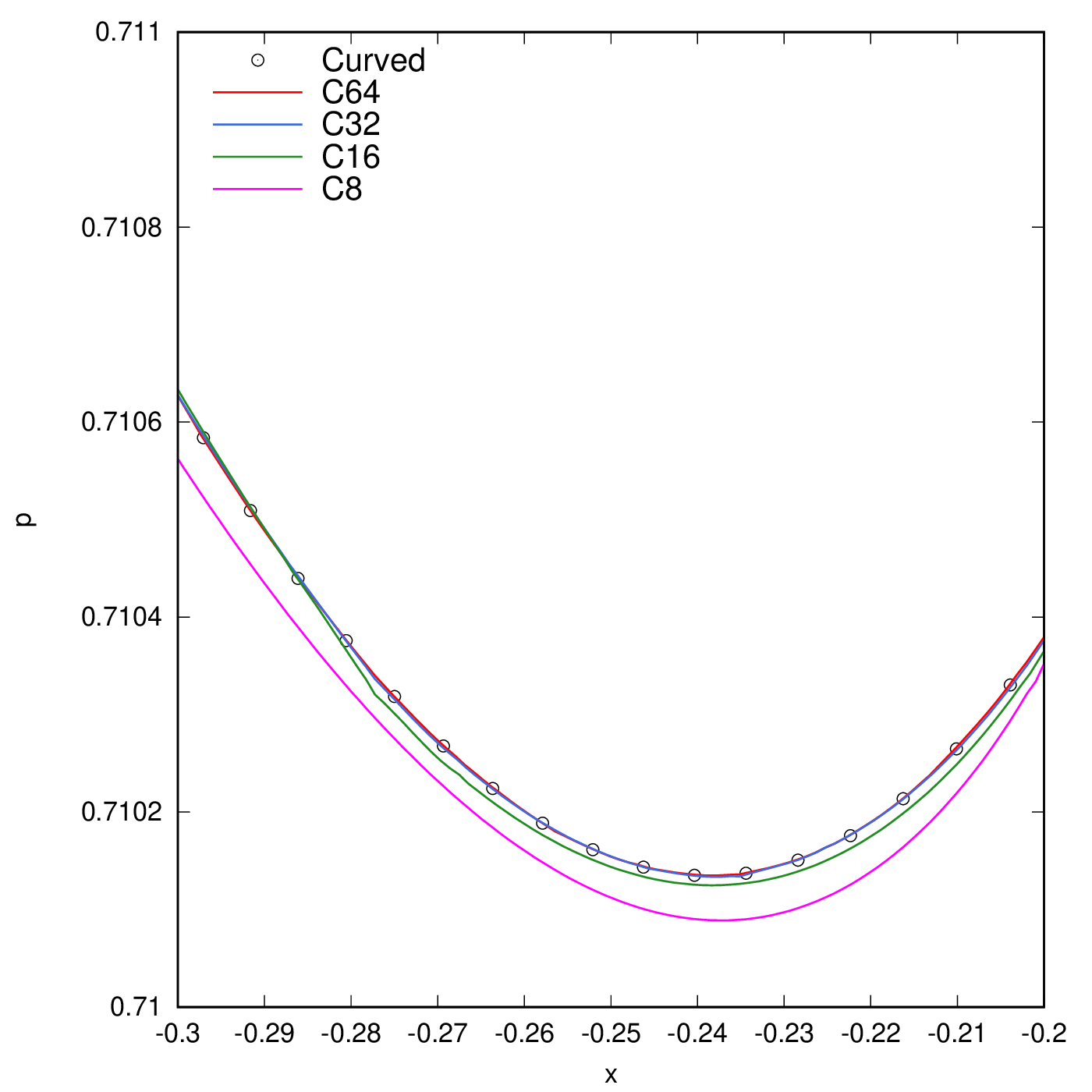Study of high-fidelity simulations for compressible turbulent flows and aeroacoustics around complicated geometries
JAXA Supercomputer System Annual Report April 2019-March 2020
Report Number: R19EACA38
Subject Category: JSS2 Inter-University Research
- Responsible Representative: Hiroyuki Asada, Department of Mechanical Engineering, Ritsumeikan University.
- Contact Information: Hiroyuki Asada(asahiro.cfd.1601@gmail.com)
- Members: Hiroyuki Asada, Yoshifumi Ogami, Daisuke Nishida, Shinya Endo, Kazuki Miyata
Abstract
This study aims to develop a high-fidelity solver for aeroacoustics simulations. The solver is based on the high-order discontinuous Galerkin (DG) method which is one of the high-order unstructured mesh methods and the large eddy simulation giving highly accurate turbulent flow simulations.
Reference URL
N/A
Reasons and benefits of using JAXA Supercomputer System
The highly accurate simulations of turbulent flows and aeroacoustics require the high number of computational cells and high computational cost, and thus massive parallel computations using super-computer is mandatory to realize such simulations. Additionally, the high-order DG method is well suited to the massive parallel computations because high execution efficiency can be realized by this method.
Achievements of the Year
Effects of wall representation on numerical solutions for aeroacoustics are investigated. The wall represenation is deteriorated when coarse meshes are used to exploit the advantages of high-order DG methods. The deterioration is discussed in many works; however, detailed effects of this deterioration have not been examined particularly for aeroacoustics simulations. This study investigate these effects by comparing numerical results between the cases of curved mesh and linear mesh on a problem of acoustic propagation around a cylinder. The 4th-order DG method and explicit time integration scheme are employed for spatial and time discretizations, and sufficiently fine mesh giving grid convergence is used for the investigation. Figure 1 and 2 show the pressure distribution on the cylinder surface and enlarged view. In these figures, CX indicates that the cylinder is represented by X linear meshes. Although the global effects of the wall representation are small, the cases of C8 and C16 exhibit clear differences with other cases. The case of C16, i.e. the cylinder is represented by 16 linear meshes, occurs when the grid convergence is achieved with 16 meshes in the circumferential direction. For the high-order DG method, this situation occurs when the 8th-order scheme is employed (it is clarified in the grid convergence studies of this study). Therefore, we can say that the deterioration of wall representation has to be concerned when the 8th-order DG method is employed for aeroacoustics simulations. These results are obtained when the case of zero background flow, and it is possible that these effects of wall representation become prominent when the background is non-zero.
Publications
- Non peer-reviewed papers
1) H. Asada, "Dispersion and dissipation analysis for unphysical modes of high-order discontinuous Galerkin methods", AIAA paper, AIAA 2020-1317, 2020.
- Oral Presentations
1) H. Asada, "Dispersion and dissipation analysis for unphysical modes of high-order discontinuous Galerkin methods", Scitech 2020, Hyatt Regency Grand Cypress, Orland, Florida, January, 2020.
Usage of JSS2
Computational Information
- Process Parallelization Methods: MPI
- Thread Parallelization Methods: N/A
- Number of Processes: 32 - 1028
- Elapsed Time per Case: 30 Hour(s)
Resources Used
Fraction of Usage in Total Resources*1(%): 0.23
Details
Please refer to System Configuration of JSS2 for the system configuration and major specifications of JSS2.
| System Name | Amount of Core Time(core x hours) | Fraction of Usage*2(%) |
|---|---|---|
| SORA-MA | 1,998,807.64 | 0.24 |
| SORA-PP | 6,301.76 | 0.04 |
| SORA-LM | 4.30 | 0.00 |
| SORA-TPP | 0.00 | 0.00 |
| File System Name | Storage Assigned(GiB) | Fraction of Usage*2(%) |
|---|---|---|
| /home | 3.18 | 0.00 |
| /data | 3,255.21 | 0.06 |
| /ltmp | 651.04 | 0.06 |
| Archiver Name | Storage Used(TiB) | Fraction of Usage*2(%) |
|---|---|---|
| J-SPACE | 0.00 | 0.00 |
*1: Fraction of Usage in Total Resources: Weighted average of three resource types (Computing, File System, and Archiver).
*2: Fraction of Usage:Percentage of usage relative to each resource used in one year.
JAXA Supercomputer System Annual Report April 2019-March 2020




